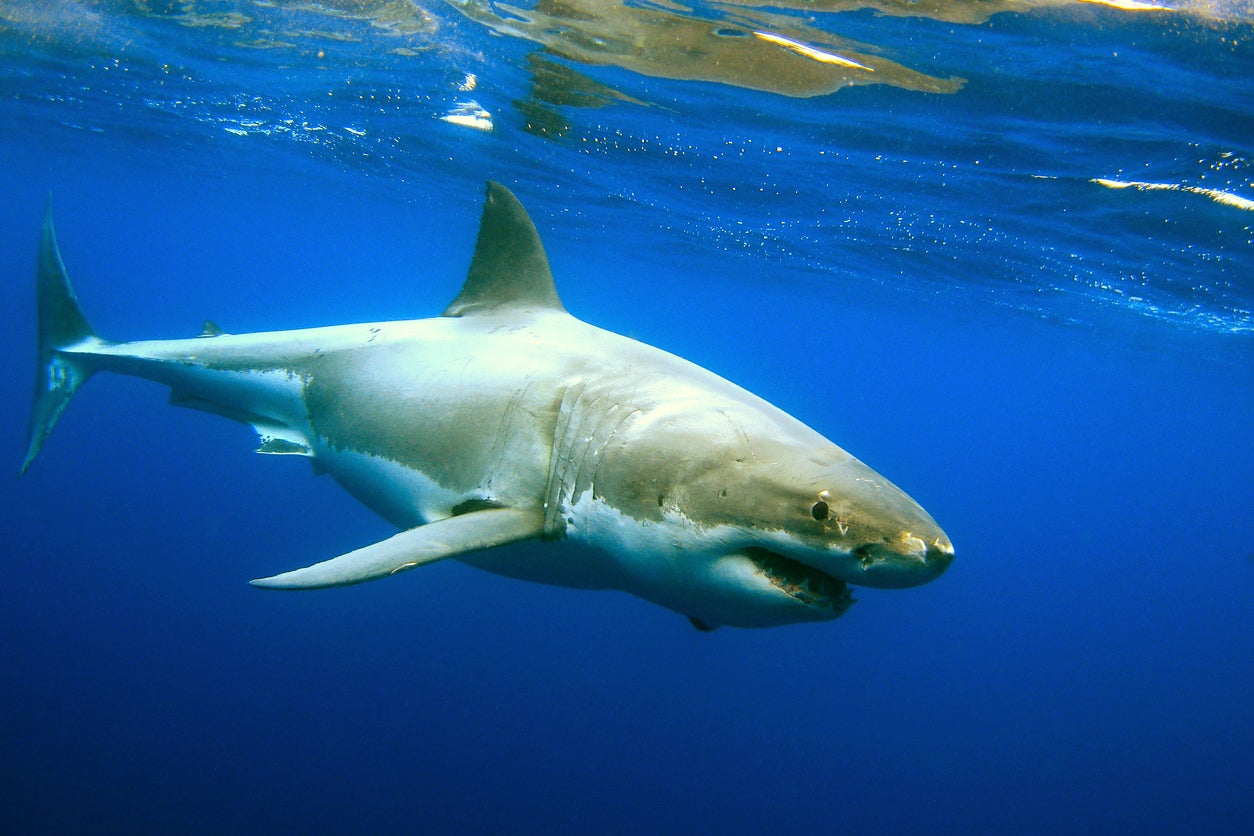Surfer breaks silence over harrowing shark attack: ‘I feel really grateful’
He saw a “large black silhouette” before the attack

A 33-year-old surfer has just opened up about the harrowing experience of being attacked by a great white shark in California.
Michael ‘Jared’ Trainor told Fox News Digital that he no longer goes surfing alone after the October 2022 attack at Centerville Beach in Ferndale, which could’ve cost him his life.
“People have died from this thing, and I was pretty close to losing my own life,” he said. “I feel really grateful that I was able to bounce back from it.”
The ordeal began when he spotted a “large black silhouette” under the water just before the attack. He then felt a curious sensation on his knee, followed by a “crunching” as the predator’s teeth sunk into his leg.
“It felt like a dog was trying to get into my wetsuit," Trainor said, adding that he “managed to give it a few firm kicks.”
The kicks were enough to free his leg, and he used his board to travel back to the shore and away from the great white, who was estimated to be around 16 feet long and more than 1,000 pounds.
A fellow surfer in the parking lot saw the attack and ran toward the shore to help him.
“As I stood on my feet when I got to the sand, I noticed my whole leg was just basically flayed open, and I was shocked that I was still able to walk,” Trainor recalled. “I was bleeding a lot.”
He said the other surfer used his dog’s leash to tourniquet his leg until EMTs arrived to rush him to Redwood Memorial Hospital in Fortuna, California.
Trainor initially thought he had been attacked by a seal — until he saw his surf board with a shark bite mark in it. The shark caused six lacerations across Trainor’s inner thigh, a tear in his knee and some bone penetration, forcing him to undergo surgery and take physical therapy before he could ride the waves once again.
“I still surf that same beach pretty frequently, but now there’s a group of guys, and we all communicate with each other when we’re going so that we can have a buddy in the water with us," Trainor said.
Stephen Kajiura, a Florida Atlantic University professor of biological sciences specializing in sharks, told The Independent that the number of recent attacks is a “bit high” but is the natural result of more people in the water during summer.
Another reason for increased shark activity is small bait fish, which sharks feed on, swimming close to the beach, Kajiura said.
In June, there were three shark attacks in Florida in a month. Three other attacks were reported in the U.S in June, one in Southern California and another in Hawaii, one of which killed a swimmer.
A spate of shark attacks also marred July 4 celebrations, with multiple people injured. A shark attacked Texas beachgoers swimming in shallow waters on July 4, the same day a shark bit an Ohio tourist in Florida.
The U.S. has the most shark attacks of any country, according to according to the International Shark AttackFile for 2023, representing 36 cases, or 52 percent.
Join our commenting forum
Join thought-provoking conversations, follow other Independent readers and see their replies
Comments
Bookmark popover
Removed from bookmarks